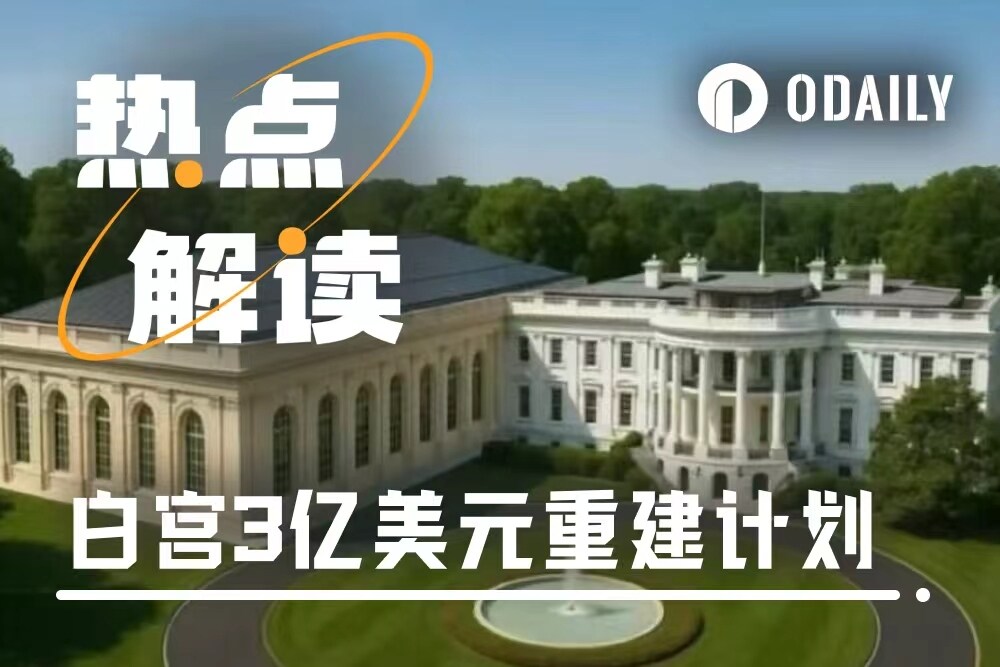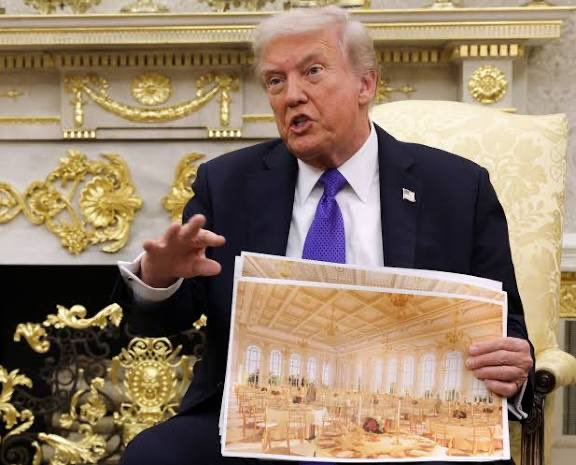Government Shutdown, White House Demolition: Trump's $300 Million "Private Banquet Hall" and Its Crypto Backers
- 核心观点:加密资本通过捐赠进入美国权力中心。
- 关键要素:
- 特朗普私人筹资3亿美元建白宫宴会厅。
- Ripple、Coinbase等加密公司现身捐助名单。
- 项目获科技巨头及国防企业联合支持。
- 市场影响:加密行业获得政治话语权,监管环境或松动。
- 时效性标注:长期影响
Original | Odaily Planet Daily ( @OdailyChina )
Author | Dingdang ( @XiaMiPP )
While the US government is in a state of shutdown, excavators in the East Wing of the White House are roaring day and night.
US President Trump personally approved this massive demolition operation, not for national security or to make "America great again", but to build a privately funded 80,000-square-foot banquet hall next to the White House.
A "demolition and reconstruction" ceremony
The East Wing of the White House, built in 1942, was originally a symbol of institutional power: the First Lady's Office, the White House Military Office, and the Social Secretariat were all housed in that understated and stately building. For decades, it was the first door through which countless visitors entered the center of American power. Now, that door is temporarily closed. Last month, the White House announced the indefinite suspension of all public tours, citing construction work in the ballroom.
As early as August of this year, Trump proposed building a new White House ballroom. At the time, he said the new ballroom would be "adjacent to, but not touching," the existing building. On October 22nd, he personally confirmed in the Oval Office: "To do this properly, we must demolish the existing structure," because, after consulting with architects, he found that demolishing the entire East Wing would be more effective than partially demolishing it. Otherwise, it would detract from the new ballroom, which is "a very, very expensive, beautiful building." As he spoke, a model of the White House rested on the table before him, and he held a rendering of the White House ballroom.

As a result, the new ballroom, originally intended to accommodate 650 people, was eventually expanded to accommodate nearly 1,000 people, and the cost rose from the original $200 million to "around $300 million." A White House spokesman stated that the East Wing "whole" would eventually be "modernized and rebuilt."
Where does the money come from?
This is not a federal budget expenditure, but a "private crowdfunding." Trump said the $300 million cost will not be borne by taxpayers, but will be borne by private donors, including himself.
This makes sense. After all, according to a recent Financial Times investigation, the Trump family's crypto business generated over $1 billion in pre-tax profits over the past year. If the unrealized gains are included, their net worth could increase by several billion dollars. With such financial resources, the donation is likely just a public relations expense to "leave a lasting legacy."
Last week, Trump held a fundraising dinner, crediting the project with support from "generous patriots and incredible American businesses." The list of donors, released by the White House on October 23rd, includes some of the largest US tech companies, including Amazon, Apple, Google, Meta, and Microsoft. Google's YouTube has agreed to contribute over $20 million to the project. Defense and telecommunications giants such as Lockheed Martin, Comcast, T-Mobile, and Palantir are also on the list.
More notably, the crypto industry also made the list of White House donors . Ripple, Tether America, Coinbase, and the Winklevoss twins (Cameron and Tyler appear separately) all made the list. Ripple, once a symbol of the crypto industry's anti-regulatory stance due to its protracted legal battle with the SEC, while Coinbase has long navigated the lobbying system, hoping to establish legitimacy.
For the past decade, the crypto industry has touted itself as a "decentralized revolution" against the monopoly of traditional power. Now, with a "donation," they've entered a corner of history, proving with a bill that a decentralized future ultimately requires a central authority.
Of course, not everyone is thrilled with the reconstruction. "To me, this giant ballroom is a moral nightmare," said Richard Painter, a veteran lawyer who served as White House counsel during the George W. Bush administration. "It's about leveraging access to the White House to raise money... These companies all have a stake in the government."
The brick walls of the White House's East Wing are coming down, and the foundation for the new lobby is being laid. In this "reconstruction ceremony," new financiers are entering the game. The rules of the game in Washington haven't changed—only this time, crypto investors have finally gotten a ticket.



